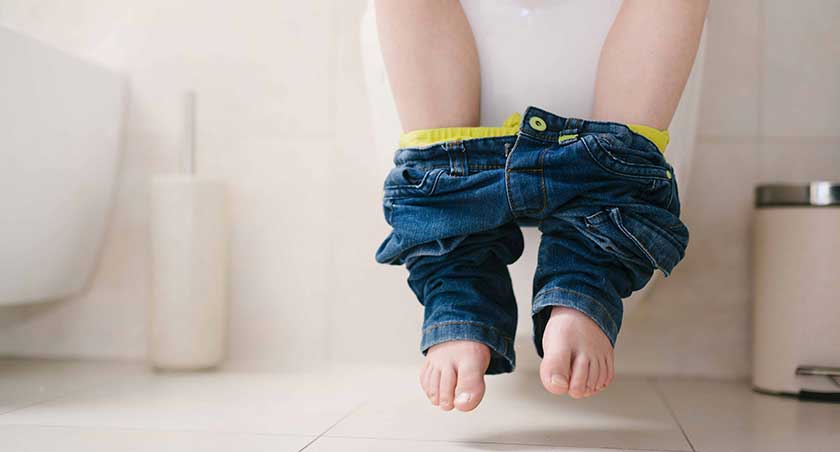It is estimated that 8 per cent of girls and 2 per cent of boys will have a UTI by the age of seven. Under one year of age, boys are more likely to have a UTI than girls.
The most common bacterium to cause UTI in children is E coli, which is found in over 75 per cent of UTIs.
Diagnosing this common infection can be difficult however, as symptoms can be vague and varied and babies and very young children usually can’t express how they are feeling.
What to UTI symptoms to look for in children
Paediatric Urologist Naeem Samnakay says there are a few things to look out for.
“A UTI often presents with a generally unwell baby, with symptoms and signs ranging from a high temperature, vomiting, lethargy, poor feeding and irritability,” he says.
“Testing a urine sample from the child is the best way available to check if there is a urinary tract infection.”
Once the urine sample has been obtained for testing by your GP or a paediatric emergency centre, if your child has a suspected UTI they are started on antibiotics that are most likely to be effective.
“The safest and most effective way of managing a UTI is prompt treatment with antibiotics,” Naeem says.
“If the laboratory detects that the bacterium causing the UTI is resistant to the antibiotics initially prescribed, the doctor will then prescribe a different, more effective, antibiotic instead.”
What if medication doesn't work?
Once your child is on antibiotics, symptoms should start clearing up but if they don’t, or if symptoms worsen, then retesting the urine, and other tests, may be required.
“10 per cent of children diagnosed with a febrile UTI will be found to have an underlying structural problem in their urinary tract,” Naeem says.
“For example, dilatation of the urinary tract or ‘hydronephrosis’ can occur if there is a blockage along the urinary tract, so if your child has a confirmed UTI he or she should undergo an ultrasound scan of their urinary tract to screen for such conditions.”
Some children who have a confirmed UTI have vesico-ureteric reflux (VUR), an abnormal backwash of urine from the bladder to the upper urinary tract. Special tests, often arranged by the paediatric urologist, are required to diagnose VUR, as it can be present even if the ultrasound appears normal.
“If VUR is present, or a blockage along the urinary tract is detected, surgery may be required to correct the problem, reducing the risk of future UTIs and reducing the risk of damage to the urinary system and kidneys.”
Why do some children get UTIs and other don't?
Naeem says various factors can increase the risk of UTI in children, these include:
- VUR
- obstruction in the urinary tract
- constipation and soiling
- bladder dysfunction
- urinary incontinence
- poor oral fluid intake
“These risk factors can be managed and treated accordingly to reduce the risk of UTI," he says.
“Circumcision in infant boys has been shown to be a very effective UTI risk-reduction strategy. Probiotics and cranberry powder or tablets may be helpful in minimising UTI risk.
“Untreated UTIs can result in long-term damage and scarring to the kidneys so it is important to seek treatment as soon as symptoms appear.”


